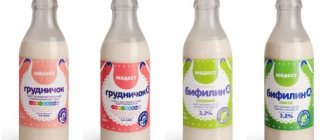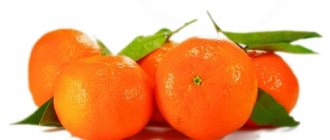Sorrel is an annual or perennial herbaceous plant belonging to the buckwheat family. Grows on all continents, unpretentious. Over 150 plant species are known, including wild and cultivated varieties.
Because of the mild sour taste of the leaves, the plant is sometimes called “sour,” “sour,” and other similar names. Sorrel is quite popular in the cooking of different nations.
Small green leaves that appear in early spring can help cope with seasonal hypovitaminosis. But is it permissible for children to consume sorrel, and at what age? In what form can it be offered to children? Are there any contraindications for children to eat sorrel? These are the questions that interest parents.
100 g of this useful herb contains:
- 1.5 g proteins;
- 2.9 g carbohydrates;
- 0.3 g fat;
- 92 g water;
- 1.4 g ash;
- 0.7 g organic acids;
- 1 g unsaturated fatty acids;
- 1.2 g.
Carbohydrates are represented mainly by simple sugars (2.8 g/100 g), starch in sorrel is only 0.1 g/100 g.
The calorie content of 100 g of fresh sorrel is 22 kcal. The energy value of the boiled product is reduced to 20 kcal.
The composition of sorrel includes minerals:
- copper,
- manganese,
- potassium,
- molybdenum,
- selenium,
- phosphorus,
- sodium,
- fluorine.
The following vitamins were found in sorrel: , niacin, beta-carotene, PP, K.
Benefit
Despite the many beneficial properties of sorrel, it should be introduced into a child’s diet no earlier than 3 years.
The vitamin and mineral complex of sorrel has a beneficial effect on the body:
- A large amount of molybdenum promotes better absorption of iron, ascorbic acid and other beneficial substances.
- Sorrel exhibits antibacterial activity, has an analgesic effect and accelerates the healing of shallow wounds and burns.
- The juice of the plant has an anti-inflammatory effect. Decoctions and infusions of sorrel are used to gargle and gargle for sore throat, sore throat, gingivitis (inflammation of the gums), pharyngitis (inflammation of the pharynx), and toothache.
- The composition of sorrel includes tannic, malic, citric, and pyrogallic acids. Their greatest quantity is contained in young leaves in spring. Thanks to the action of these acids, it is easier to cope with diarrhea, digestion and bile flow improves. Eating sorrel increases appetite.
- The antioxidant properties of vitamins E and A help rid the body of toxic substances. It is no coincidence that in ancient times sorrel was used to make antidotes for snake bites and poisonous insects. These vitamins increase the body's immune defense and speed up the child's recovery from viral infections. Decoctions of the plant help to cope with an unproductive annoying cough and restore a hoarse voice.
- Vitamin B9 and iron in the plant ensure an increase in hemoglobin and the synthesis of red blood cells, which is necessary for prevention and treatment.
- B vitamins and phosphorus support normal brain activity and balance the processes of excitation and inhibition. Children who receive meals with sorrel twice a week are better able to cope with psycho-emotional stress and stressful situations, and their sleep improves.
- Sorrel decoctions help relieve itching and irritation of the skin; they are used for acne in adolescents.
- Ascorbic acid, vitamins K and PP in sorrel thicken the vascular wall and help cope with bleeding gums and nosebleeds.
Traditional medicine recipes
In some cases, it is possible to do without pharmaceuticals during treatment by using recipes from traditional healers.
Alternative medicine suggests using sorrel for many diseases:
- A decoction for the treatment of shallow (1-2 degree) burns: sorrel seeds in the amount of 20 g should be boiled for 15 minutes in a glass of water. Treat the affected area with the resulting decoction 4-5 times a day.
- For bleeding gums and bad breath, it is recommended to rinse with oxalic juice, half diluted with water. To obtain juice, the leaves, previously washed and scalded with boiling water, need to be finely chopped, ground with a wooden spoon to a paste, and squeezed out the juice through cheesecloth. You cannot use a meat grinder or blender, since sorrel oxidizes when in contact with metal and loses its beneficial properties.
- Headaches can be relieved by rubbing the temporal areas of the head with oxalic juice.
- To treat acne and skin rashes, sorrel infusion is used. To prepare it, 2 tsp. chopped fresh or dried leaves need to be poured with a glass of boiling water, leave for 15 minutes, strain. Wipe skin areas 4-5 times a day.
- To get rid of it, it is recommended to eat 5 sorrel leaves daily.
Before using traditional medicine recipes for children, you should consult a pediatrician.
Harm and contraindications
There are not many contraindications, but all of them can seriously harm the health of children:
- Sorrel is a potential allergen. If a child has it, its use can only be started after consultation with a pediatrician or allergist.
- Oxalic acid contained in the leaves of the plant leads to disruption of mineral metabolism. As a result, salts precipitate in the urine and contribute to the formation of stones in the urinary system, that is, to. If you already have urolithiasis, you should not use sorrel.
- Gastric contents are also a contraindication for the use of sorrel (teenagers may suffer from this).
- Oxalic acid interferes with the absorption of calcium. Eating these greens too often can lead to osteoporosis (increased bone fragility due to demineralization of bone tissue) and other pathologies of bones and joints.
- The use of sorrel is contraindicated in cases of impaired water-salt metabolism.
At what age should it be given to children?
For a child three years old and older, green borscht can be prepared from young sorrel leaves.
Some parents treat sorrel as a harmless plant that does not pose a health hazard, and offer their infants borscht with sorrel as early as 9-10 months.
They risk harming the child's health. According to experts who do not deny the beneficial properties of sorrel, there should be no rush to introduce this product into baby food.
Due to the possible negative impact on the urinary system, it is recommended to introduce dishes with sorrel into the diet of healthy children no earlier than 3 years.
If children have any chronic diseases, nutritional issues should be discussed with a pediatrician.
All experts agree that it is best for children to use young leaves that appear in the spring:
- Firstly, they contain more substances beneficial to the body.
- Secondly, the plant contains oxalic acid in minimal quantities during this period - citric and malic acids predominate, which are stabilized by heat treatment.
But on the question of what form is best to give sorrel to a child, expert opinions differ:
- Some recommend introducing sorrel into the diet after heat treatment, that is, in the form of green borscht or soup.
- Others suggest preparing salads with fresh sorrel for children, arguing that heat treatment increases the concentration of oxalic acid in the leaves.
In salads, sorrel can be combined with spinach, arugula, and you can dress the salad with olive oil and add lemon juice for taste.
To neutralize the effect of oxalic acid, it is recommended to combine the use of sorrel leaves with kefir, yogurt, sour cream and other fermented milk products.
When introducing sorrel into a child’s diet, first add just a few leaves to the soup (or salad). If well tolerated, the portion of the product is gradually increased. But it should be remembered that frequent consumption of this greenery is harmful to the child; once (maximum two) times a week is enough.
Recipe for dishes with sorrel for children
From sorrel leaves you can prepare many delicious, appetizing and healthy dishes for your baby. A leaf of greenery requires preliminary external treatment - scalding with boiling water.
Delicious salads, snacks, and various side dishes for meat or fish dishes are prepared with fresh leaves. It is very useful to eat vegetables with sour cream, natural yogurt, and combine them with other fermented milk products. This additive neutralizes oxalic acid.
Is it possible to give children sorrel soup - if the baby eats such dishes well, add soup to his diet. This first dish is very beneficial for the digestive system, so it can be consumed by children, pregnant and lactating women.
Soup
A child prepares sorrel soup; we prepare a simple recipe for sorrel soup with children
- sorrel leaves – 7-8 pcs;
- potatoes - 3 pcs;
- chicken eggs – 3 pcs;
- sour cream - 2 table. L.
- chicken broth - 2-3 l.
Bring the broth (chicken, turkey, rabbit or beef) to a boil, then add the potatoes, cut into small cubes, and simmer until tender, about 10 minutes.
Read on the topic At what age can you give spinach to a child: benefits for children, soup recipe
Beat the chicken eggs and also add to the soup, mix well. Before cooking, rinse the sorrel leaves thoroughly, scald with boiling water and finely chop. Mix with sour cream and add to soup when potatoes have softened. Boil the soup for another 2-3 minutes and leave to steep under the lid.
There are many recipes for making sorrel soup for children. You can add onions, carrots, cauliflower, bell peppers, parsley or dill, and chicken breast to it. For older children, sorrel soup with the addition of mushrooms is prepared.
When giving your child sorrel soup for the first time, you can grind it in a blender until pureed, adding a piece of butter. If it is well tolerated and there are no problems with the gastrointestinal tract, after a week you can offer your baby soup without chopping it.
Read on the topic At what age can you give parsley and dill to a child?
Sorrel is a juicy green with a pleasant sweet and sour taste, which is very popular with adults and children. This plant has many beneficial properties - it effectively increases the body's immune strength and stimulates the digestive system. Sorrel can be eaten by children from the age of 3 years. Correct introduction of the product, taking into account age restrictions, will bring maximum benefits to children's health.
Read on the topic At what age can children eat sauerkraut and cabbage soup?
Share link:
Did you like the article?
Average rating 0 / 5. Total votes: 0
- about the author
- Recent publications
Elena Volodina
Author of the article
Elena Volodina recently published (view all)
- At what age can children have mushrooms: why not give them - 09/01/2021
- When can you give your child cheese - 07/18/2021
- At what age can you give your child salt: when to salt food for children - 05/31/2021
Summary for parents
You can make a salad from fresh sorrel leaves.
Sorrel, due to its vitamin and mineral composition and the presence of fiber, has many positive properties. The young leaves of the plant are especially useful. However, due to the content of oxalic acid, eating this plant can have an undesirable effect on the body and contribute to the formation of kidney and bladder stones.
You can introduce sorrel into the diet of children no earlier than 3 years old and do not overuse the frequent preparation of dishes with sour leaves.
Elena asks: “My son is 1.2 years old. Can I give him a taste of borscht with sorrel?”
Sorrel is not welcome in children's diets under 3 years of age.
Due to the increased content of oxalic acid, there is a high risk of irritation to the mucous membrane of the digestive tract.
Most of this substance is excreted by the kidneys. But when combined with calcium, it forms sparingly soluble salts of uric acid - oxalates.
If we consider that up to 60% of kidney diseases in childhood involve crystalluria (an excess of crystals of various salts in the body), the strict age restrictions imposed by doctors become clear.
After 3 years, sorrel is used to prepare soups, cabbage soup, and borscht.
The best time to collect sour leaves is considered to be early spring. Tender young greens have a minimal supply of oxalic acid. As the plant grows, it becomes more “aggressive” and unsuitable for baby food.
Dishes made from sorrel should be a rare exception in the child’s menu, so as not to provoke dysfunction of the excretory system and mineral metabolism.
It is not canned greens that are valued, but fresh herbs. It can be stored in the refrigerator for no more than 2 days.
The sorrel must be sorted and washed before cooking.
Pay special attention to the dishes! Aluminum and cast iron, when interacting with oxalic acid, form toxic substances.
Pay attention to a healthy and safe alternative - spinach, which looks similar to sorrel.
- It appears in baby food from 4–8 months in ready-made canned puree.
- After a year, it is ideal for bright purees, omelettes, soups, and soufflés.
- From the age of 2 it becomes an important vitamin component of fresh salads.
Like sorrel, spinach contains a record amount of ascorbic acid, vitamin A, and minerals. It is superior to its “sour” garden brother in terms of sodium, potassium, and calcium content.
The disadvantage, according to adults, is an inexpressive taste without a piquant sourness. But this is precisely what allows you to diversify children's dishes already in the first year of life.
The humble plant of the Buckwheat family is popular all over the world. Young sorrel leaves are especially good: they have practically no sourness, their taste is softer and more pleasant. In the spring, when greenery just appears, you can use them to replenish vitamin deficiencies. Today we will talk about the importance of sorrel in the menu of children - do they need it or is it better to refrain from eating it, up to what age should it not be included in the diet of children, how to avoid health problems.
Sorrel for children
The humble plant of the Buckwheat family is popular all over the world. Young sorrel leaves are especially good: they have practically no sourness, their taste is softer and more pleasant. In the spring, when greenery just appears, you can use them to replenish vitamin deficiencies. Today we will talk about the importance of sorrel in the menu of children - do they need it or is it better to refrain from eating it, up to what age should it not be included in the diet of children, how to avoid health problems.
What are the benefits of sorrel?
Sorrel contains many vitamins and minerals, so it has no equal in molybdenum content. This is an important element that increases the absorption of other beneficial substances, in particular iron, vitamin C and many others. The leaves also contain essential oils and acids - in addition to oxalic acid, there is tannic acid and pyrogallic acid, a complex of mineral elements; In terms of calcium content, they are superior to many other products.
Sorrel is valued for its antibacterial activity and is used in the manufacture of pharmaceuticals. Young leaves of the plant are considered the most useful, as they contain more fruit acids - malic and citric. Adding this product to your diet will help improve digestion, and it also has an anesthetic effect, accelerates wound healing, and helps cope with inflammatory diseases and scurvy. Other useful properties:
- choleretic effect – sorrel helps cleanse the body;
- a decoction of the leaves is useful for disorders of the digestive system; it is also used for external treatment of acne;
- helps improve liver activity - for this it is enough to use a decoction of the leaves;
- Externally, sorrel is used to combat stomatitis and other diseases of the oral cavity; it can also cope with skin irritation;
- sorrel is useful for colds, it speeds up the onset of recovery, helps to quickly cope with viral infections - this effect is due to a set of vitamins and minerals that have an antioxidant effect;
- useful for spring vitamin deficiency - it is one of the first to emerge, it is one of the sources of vitamins during the period when there are several months left before the ripening of local vegetables and fruits;
- increases hemoglobin due to a combination of iron, B vitamins and molybdenum - in such a “company” an improvement in blood composition occurs faster than with the use of pharmaceuticals;
- stimulates the removal of sputum in pulmonary diseases, including bronchitis or pneumonia;
- supports the body with problems with the heart and blood vessels.
Sorrel is extremely useful for gastritis with low acidity of gastric juice. It has a positive effect on the pancreas, normalizes the functioning of the digestive system, helps cope with colitis and enterocolitis, and improves the condition of hemorrhoids. In small quantities, sorrel has a strengthening effect, and in small quantities it has a laxative effect. It is recommended to use sorrel for problems with gums - due to the vitamin and mineral complex, it will help strengthen them and get rid of bleeding.
Chemical composition and beneficial properties
Sorrel leaves contain a huge amount of vitamins and minerals, amino acids and other beneficial substances that strengthen the child’s body and ensure the full functioning of the digestive system.
Beneficial properties of greens:
- The plant contains an increased dosage of vitamin C and many other vitamin elements that increase and strengthen the immune system and help cope with inflammatory diseases.
- Contains calcium, potassium, magnesium, phosphorus, iron, which improve the functioning of the cardiovascular system, normalize the level of hemoglobin in the blood and prevent the development of anemia.
- Sorrel is useful due to a large number of antioxidants - they normalize blood circulation and protect the body's cells from aggressive environmental influences.
- Organic acids promote good digestion, improve metabolism, and increase appetite.
- Frequent use of this product helps normalize the water-salt balance, removing excess fluid from the body and preventing the appearance of edema.
- Sorrel in children's diet helps get rid of problems with stool.
When giving sorrel to a child, you must take into account the age at which this can be done and the correct way to introduce this green into the diet so as not to harm the child’s health.
Sorrel in folk medicine
For many diseases, the use of sorrel in the initial stages will help to do without pharmaceuticals. True, since we are talking about children, do not forget that the doctor has the final say. Useful recipes:
For burns. Pour 10 g of sorrel seeds into 1/2 cup of water and simmer for 15 minutes. Use the decoction for external treatment of affected areas.
Putrid breath, bleeding gums. Prepare sorrel juice, dilute it with water in a 1:1 ratio, use it to rinse the mouth.
For diarrhea. Pour sorrel root (2 tablespoons) into 1.5 cups of water (80–90° C), simmer in a water bath for 25–30 minutes, then cool and strain. Take 2 tablespoons of the decoction. spoons.
For acne, skin rashes and other dermatological problems, it is recommended to drink sorrel tea. Preparation: 2 teaspoons of dried leaves per 200 ml of water. Pour boiling water over them and wait 15 minutes. Drink no more than 2 cups per day.
At what age can children eat sorrel?
The mistake of many parents is that they consider sorrel an absolutely harmless product and offer dishes from it (especially sorrel soup) from 8–10 months. Despite the many beneficial properties, it is necessary to wait until the child turns 3 years old when introducing this product into the diet of children. This is due to the possible negative effect of oxalic acid on the genitourinary system.
Important
! To prepare dishes for children, it is better to use young leaves. Firstly, they have greater nutritional value, and secondly, malic and citric acids dominate in them, and the oxalic acid content is minimal. Later, when the plant becomes more mature, the composition of its leaves will change, resulting in the risk of salt deposits in the urine after consuming them.
Start introducing your child to sorrel with soup. Add just a few leaves for the first time. If the baby accepts the new dish normally, next time increase the portion of the product. Subsequently, you will be able to prepare not only green borscht, but also salads. Please note that eating sorrel often is contraindicated; it is enough to give it once, maximum twice a week.
Introducing sorrel into children's diets
At what age can a child be given sorrel? 2 points are important here:
- How much the child can already chew and masticate. Considering that the sorrel leaf is soft, the presence of teeth in the child is important. It is unlikely that your gums will be able to chew such food. Read about how to teach a child to chew>>>
- In what form will a child become familiar with sorrel? If this is sorrel soup, where the baby comes across 1 small leaf of soft, boiled sorrel, then in principle, already around the year it is quite possible to offer such a dish.
Of course, it’s not worth waiting until 3 or even 4 years.
Important! We remember about the window of tolerance to foods - before the age of 1.5 years, it is advisable for the child to get acquainted with the whole variety of foods that are eaten in the family.
And not only with products, but also with their different consistencies and methods of preparation.
For more information about the window of tolerance and the introduction of new products, see the online course ABC of complementary feeding: a system for the safe introduction of complementary feeding to infants>>>
You can start introducing sorrel into your child’s diet only if he has no problems with the gastrointestinal tract or urinary system, and there are no allergies.
It is best to start introducing sorrel to your baby with soup. For the first time, add a few leaves to the soup and observe the reaction. If everything goes well, then next time you can increase the portion of the product.
Precautionary measures
Oxalic acid, which is contained in significant quantities in the leaves, can disrupt mineral metabolism and negatively affect kidney activity. With frequent use of the product, the risk of salt deposition in the urine increases sharply, resulting in urolithiasis. It is also recommended to exclude sorrel from the diet in the following cases:
- with gastritis with high acidity;
- for inflammatory diseases of the genitourinary system;
- For chronic illnesses, a doctor's consultation is necessary.
To neutralize the effect of oxalic acid, it is recommended to combine the leaves with fermented milk products, in particular sour cream, or kefir, or yogurt. It is strictly forbidden to eat sorrel if there are disturbances in water-salt metabolism. Frequent use of this product contributes to the occurrence of arthritis, rheumatism and some other diseases.
Important
! To prepare sorrel, it is better to use enamel or cast iron cookware rather than aluminum.
Products for 3 servings:
- Meat broth - 2 cups
- Sorrel - 100 gr.
- Spinach - 100 gr.
- Potatoes - 2 pcs.
- Egg - 3 pcs.
- Salt - to taste
- Sour cream - to taste when serving.
The beginning of summer pleases us with fresh vegetables, herbs and berries. Now you can cook, make greens and, of course, cook cabbage soup with sorrel and egg.
Green cabbage soup is a truly spring, vitamin-rich soup, which in small quantities will only benefit both adults and children.
The recipe below is adapted for and intended for children over 1.5 - 2 years old.
How to use depending on age?
Before introducing sorrel leaves into baby food, all adults must consider the following rules:
- Store sorrel only in the refrigerator, no more than 2 days;
- rinse the leaves before cooking;
- cook in enamel or cast iron dishes;
- add sorrel at the very end of cooking;
- limit consumption (no more than 2 times a week);
- for children from 3 to 8 years old prepare soups, for older ones - first and second courses, appetizers, salads;
- combine the use of sorrel with fermented milk products.
Green cabbage soup - recipe with photos for children:
1. According to the recipe, the cabbage soup contains spinach, but if you don’t have it, you can replace it with fresh nettle. Or buy frozen spinach. But the main component is sorrel. It must be fresh.
2. Boil broth from any type of meat. I boiled chicken broth. Add salt to it.
3. Cut the potatoes into small cubes.
4. Boil it in prepared meat broth.
5. Coarsely chop the sorrel and boil in a small amount of water along with the spinach.
6. Cool the boiled greens a little.
7. Using a blender, make green puree. Or, rub the boiled sorrel and spinach through a sieve.
8. Pour the green puree into the broth with potatoes.
9. Boil the eggs hard and chop them finely.
10. When serving, add finely chopped eggs and sour cream to the cabbage soup. Stir.
Sorrel is very healthy and pleasant to the taste. Children really like its noble sourness; all mothers and fathers probably remember this from their own childhood. But like any plant with numerous medicinal properties, sorrel also has its own contraindications. Therefore, parents are often interested in the age at which sorrel can be offered to a child as food and how to prepare it in an unusual way. We will talk about this in this material.
Sorrel soup recipe for children
There are many recipes for sorrel soup, but let's look at one of them, which, in our opinion, preserves more of the beneficial properties of sorrel. You can treat your child to hot soup, or you can give it cold. In any case, the dish turns out delicious. The soup is prepared quickly, so it does not require any special culinary knowledge or talents from your mother. We will need:
- low-fat meat broth (without meat, boiled meat can be used to prepare other dishes);
- medium-sized potatoes - 2 pieces;
- chicken egg - 2 pieces;
- sorrel - 5-6 leaves.
Add salt to taste to the boiling broth, after which peeled and chopped potatoes are added. The potatoes will cook in the soup for about a quarter of an hour if they are not chopped too coarsely. For children's soup, it is better to cut the potatoes into small cubes.
Two eggs should be broken, shaken and poured into the boiling broth and immediately mixed well. Wash the sorrel leaves, pour boiling water over them, but do not cook. Chop them finely; you can use a knife or kitchen scissors for this. A couple of minutes before readiness, add a tablespoon of sour cream to the chopped greens, stir, wait a little and add the mixture to the finished potato soup with eggs.
Keep the soup on the fire for another minute, turn it off and pour into plates. Additionally, it is recommended to add a spoonful of sour cream to the child’s plate.
Some people cook soup with milk instead of broth. If a child loves milk soups, then the second option will also be suitable for him.
If desired, mother can add onions, carrots, and parsley to the soup. If you love pureed soups, after cooking, you can grind the soup in a blender, but in this case, do not forget to add a teaspoon of butter to it.
See below for the recipe for sorrel soup.
Find out if your baby's weight is normal by using the following calculator.
About the product
The inconspicuous herbaceous plant sorrel has been known for a very long time. In addition to its taste qualities, due to which the herb is widely used in cooking, sorrel is considered medicinal, since it effectively “adjusts” the human gastrointestinal tract to a normal rhythm of work. Sorrel is a storehouse of vitamin C. In addition, it is rich in potassium and contains large amounts of magnesium and phosphorus. It contains a lot of vitamin A and folic acid. There are more than 150 species of sorrel, but only two have become famous - common and horse sorrel.
The plant is considered an excellent antioxidant, it promotes metabolism, digestion, and normal blood circulation. The chemical composition of sorrel leaves is valued by hematologists - the herb, when consumed as food, helps prevent bleeding in people prone to it. Sorrel is also useful for constipation. However, it also has an unpleasant feature - oxalic acid changes the chemical composition of urine, which can negatively affect the functioning of the urinary organs, so the issue of eating the plant by children is quite controversial.
On the one hand, entire generations grew up pinching sorrel in their grandmother’s garden and eating it for their dear soul. On the other hand, these generations have quite a few health problems.
Pediatricians do not have a consensus on the use of sorrel in children's diets. Some doctors recommend it, others don't. Dr. Komarovsky, whose opinion is respected by mothers, believes that sorrel can be eaten, but only from a certain age and in small quantities, and certainly only when the child has no contraindications to eating it. The main contraindication is any problems with the kidneys and their functioning. You should also avoid this product if your child is diagnosed with gastritis with high acidity or has chronic diseases that may be complicated by kidney problems.
Standards of use
In order not to harm your health, you need to know the rules and regulations for consuming this plant. Raw sorrel leaves should not be given to a three-year-old child. It is important that the sorrel be stewed or boiled before eating.
Heat treatment reduces the level of aggressive substances in the leaves of the plant. In addition, you should not abuse sorrel. It should be taken into account that there are norms for use that depend on the age of the baby. So, children three to five years old can be given no more than 2-3 small young leaves at a time.
Sorrel combines best with vegetable products, meat broths, and starch-containing crops. For example, a dish of sorrel with spinach, potatoes, carrots, zucchini, and cabbage will be useful. First courses are best served moderately chilled.
Children over 8 years old can be offered okroshka with fresh young sorrel leaves or salad. One serving should include about 4-5 young leaves of medium size (this is about 30 grams). Pediatricians recommend starting to introduce the plant into your diet with green borscht. For a children's dish, you should take only young leaves.
Sorrel soup
Such preferences are due to increased nutritional value and lower levels of oxalic acid. The leaves of a mature plant have a slightly different composition and can provoke an increase in the concentration of salts in the child’s urine. Oxalic acid has the inherent properties of changing the chemical composition of urine, which can negatively affect the functioning of the urinary system.
Age restrictions
Sorrel is not recommended for children with kidney and urinary system diseases at any age.
Healthy children can be given this product from the age of three.
This does not mean that the mother of a three-year-old can run to the nearest green market or supermarket, grab a bag of sorrel and feed it to her child. For the first meal, only young shoots of the plant are used, in which the concentration of oxalic acid is extremely low. Such shoots occur in early spring.
Before giving to a child, they should be heat treated
- Pour boiling water over and boil for at least 5 minutes. The older the plant becomes, the more sour it is, and therefore large sorrel is suitable for borscht for adults, but not for a child, even if he is already three years old.
We have more or less figured out the fresh leaves. But quite often parents are interested in whether it is possible to give boiled sorrel leaves, for example, sorrel soup, to a one-year-old child or a 2-year-old child. Even in boiled form, the plant is not recommended for baby food until the baby is 3 years old.
Violation of age restrictions can lead to metabolic disorders, to the accumulation and deposition of salts (due to the chemical reaction of oxalic acid) in the kidneys, ureters, the development of urolithiasis in the baby, and oxalic acid often causes food allergies.
In what form should it be given?
In fresh form, adding chopped leaves to salads, cold appetizers, side dishes, sorrel leaves can be given to a child in very limited quantities only after he reaches 8 years of age. Until this time, the green leaves must be cooked. In addition to boiling and scalding, it is recommended to combine the vegetable with fermented milk products - lactic acid helps to partially “neutralize” oxalic acid. In this case, the beneficial properties of sorrel are lost to a lesser extent than when boiling it.
An excellent option is sorrel with sour cream, but this dish is not suitable for children aged 3+. The best way to give sorrel to a child is sorrel soup. Let's learn how to cook it correctly.
Composition and calorie content
100 g of this useful herb contains:
- 1.5 g proteins;
- 2.9 g carbohydrates;
- 0.3 g fat;
- 92 g water;
- 1.4 g ash;
- 0.7 g organic acids;
- 1 g unsaturated fatty acids;
- 1.2 g dietary fiber.
Carbohydrates are represented mainly by simple sugars (2.8 g/100 g), starch in sorrel is only 0.1 g/100 g.
The calorie content of 100 g of fresh sorrel is 22 kcal. The energy value of the boiled product is reduced to 20 kcal.
The composition of sorrel includes minerals:
- iron,
- copper,
- zinc,
- manganese,
- potassium,
- molybdenum,
- selenium,
- phosphorus,
- calcium,
- sodium,
- fluorine.
The following vitamins were found in sorrel: , B1, B9, B2, B6, B5, niacin, beta-carotene, , , PP, K.











